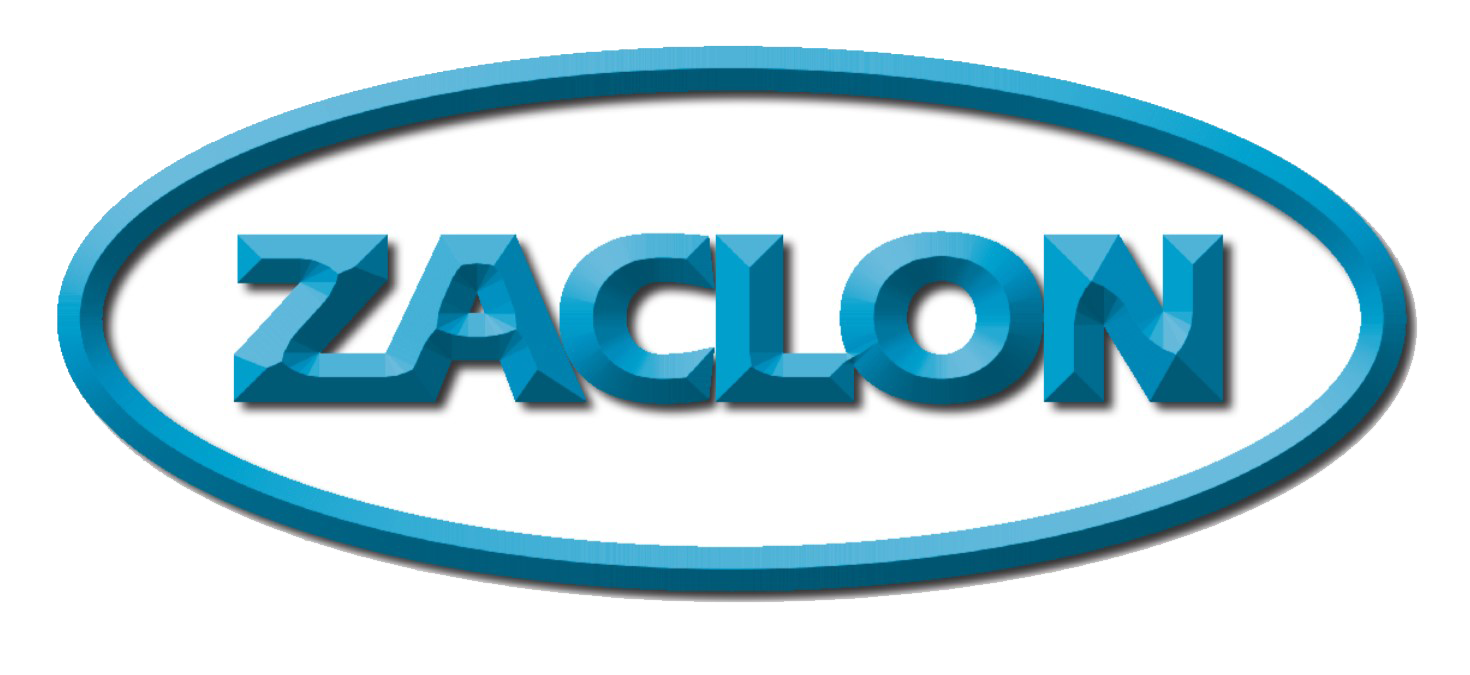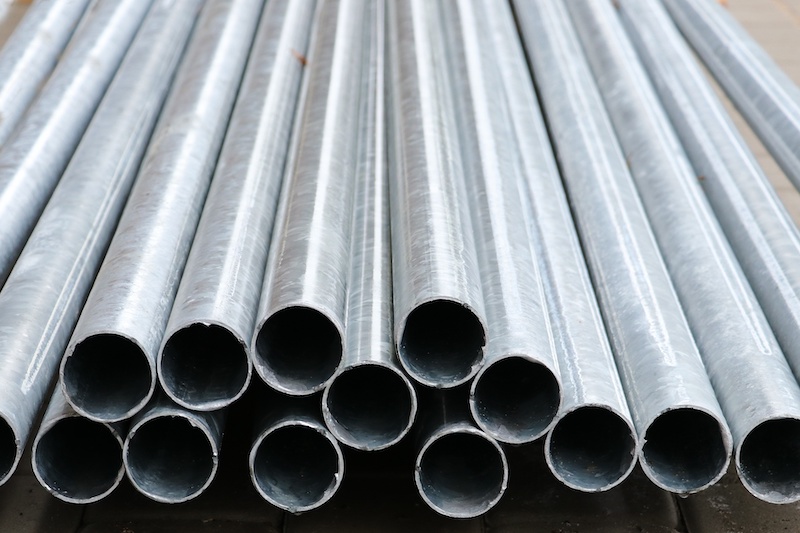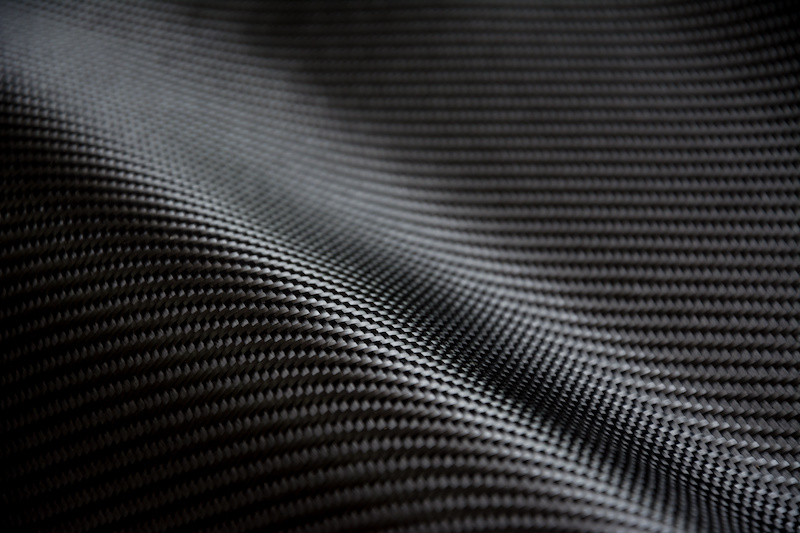Posted By Zaclon
November 04, 2022
Category: Zaclon, Products, Quilon, Chemicals, Northeast Ohio, Independence, Cleveland, Water Resistance, Grease Resistance
Our diverse product offering helps customers across various industries realize their goals of superior quality and efficiency. Our products range from chrome products, ammonium chloride, zinc chloride, potassium silicate, and specialty products. One of those products is Quilon.
What Is Quilon?
Quilon is sold in a 55-gallon drum containing 420 or 450-pounds depending on the industry and application of the product. We can also provide 40-pound pails and one metric ton totes (IBC.)
What Is Quilon Used For?
Quilon is an old chemical used for water resistance and grease resistance applications. We use Quilon for applications like food packaging and leather applications like work boots.
Is Quilon Safe To Use For Your Application?
Quilon is a safe product to use. We are the only company that can make safe-for-food packaging through the NSF (National Sanitation Foundation). Quilon is also biodegradable and safe for landfills. Quilon is also good for the planet and people.
Learn More About Quilon And How We Can Help
DuPont invented Quilon in the late 1940s; when DuPont became Zaclon, we took over many of their production systems and processes, including this one. Many customers choose Zaclon for this product because we have many years of experience manufacturing it and can provide what they need quickly. Call our team today for more information on Quilon at 440-832-1848 or email at
Posted By Zaclon
November 03, 2022
Category: Zaclon, Quilon, Products, Waterproofing, Leather Applications, Safe, Independence Ohio, Cleveland Ohio. Northeast Ohio
We've discussed our product Quilon before, but Quilon is primarily used for waterproofing solutions like waterproofing leather applications.
Quilon: What Is It?
Quilon is sold in a 55-gallon drum containing 420 or 450-pounds depending on the industry and application of the product. We can also provide 40-pound pails and one metric ton totes (IBC.)
Quilon For Your Leather Applications
Quilon is great for the use of giving leather an adhesive release and water repellency in hot or cold temperatures. Besides being able to revolutionize your leather application, Quilon is also safe for people and great for the environment.
Why Use Quilon For Your Waterproofing Application?
DuPont invented Quilon in the late 1940s; when DuPont became Zaclon, we took over many of their production systems and processes, including this one. Many customers choose Zaclon for this product because we have many years of experience manufacturing it and can provide what they need quickly.
Learn More About Why Quilon Is Best For Your Waterproofing Application
Quilon is a reactive solution where long-chain fatty acids are reactive and complexed with a chrome three molecule. The family of Quilon products is chemical treatments that impart release or water repellency to various surfaces. For information on Quilon, contact one of our team members by calling 440-832-1848 or email at
Posted By Zaclon
October 26, 2022
Category: Zaclon, Galvanizing, Steel, Solutions, Ammonium Chloride, Independence, Ohio, Cleveland, Ohio, Northeast, Ohio, Products
If you work in a steel plant or know someone who does, you might have heard of ammonium chloride. But what is ammonium chloride, and how is it used in galvanizing
Posted By Zaclon
September 26, 2022
Category: Zaclon, Galvanized Steel, Steel, Metal, Applications, Solutions, Products, Zinc, Northeast Ohio, Cleveland
Galvanizing steel is a pretty robust process; anything could go wrong. We offer two solutions for our customers regarding touching up or repairing galvanized
Posted By Zaclon
August 29, 2022
Category: Zaclon, Volan, Quilon, Products, Safe, Adhesive, Chrome 3, Bonding Agent, Carbon Fiber, Glass, Independence Ohio, Cleveland Ohio, Northeast Ohio
We offer a wide variety of unique products for our clients and customers. One of those products we offer is our adhesion-capable Volan product. But what is Volan, and should you use
Posted By Zaclon
August 25, 2022
Category: Zaclon, Galvanizing, Steel, Products, Solutions, Northeast Ohio, Cleveland, Caustic
Galvanizing steel involves a pretty serious process. Many chemicals are involved, requiring zinc to be molten at nearly 800 degrees. This process consists of the use of sodium hydroxide, or caustic. Luckily, our approach uses less caustic, which means a safer method of galvanizing
Posted By Zaclon
March 25, 2022
Category: Antiblast, Soprin
Antiblast is a product from Zaclon and Soprin designed to solve a common problem—spatter as fluxed parts go into the 850-degree zinc. Moisture trapped on the part expands rapidly, which caused the zinc to bubble and even pop out of the kettle. When you use Antiblast, this spray is minimized, often eliminated completely. This leads to a safer work area, less zinc spattered on the floor or sides of the kettle; this also reduces the amount of hot-dip galvanizer skimmings created. All this leads to zinc savings and a better work area around the
Posted By Zaclon
February 23, 2022
Category: General
When you galvanize steel to put the zinc on it, it needs to go through several steps to get the steel clean before being put into the molten zinc. To help keep any rust off and the metal looking new and healthy, you need to galvanize
Posted By Zaclon
February 21, 2022
Category: Zaclon, Quilon Products
A Quilon product imparts release or water repellency to various surfaces by combining long-chain fatty acids with a chrome three molecule.
Posted By Zaclon
February 21, 2022
Category: , General
Quilon is a product that has been around for a very long time. But did you know that Quilon can be used in a variety of different
Posted By Zaclon
January 24, 2022
Category: General
Zaclon has been a manufacturer of potassium silicate for nearly fifty years. Today, we want to talk to you about one of the unique products: Zacsil.
What Is Zacsil?
Zaclon offers several grades of potassium silicates under the Zacsil® brand name. Zacsils are solutions of a soluble glass that we dissolve in water. They come in a variety of forms and concentrations.
Depending on your application, silica and potassium oxide ratios will vary.
How Is Zacsil Utilized?
Zacsil Potassium Silicate has many applications, including welding rods, detergents, cleaners, sulfuric acid catalyst binders, paints, masonry, wood, metal coatings, and acid-resistant cement, the above-mentioned electronic applications.
As well as drilling fluid formulations, Zacsil potassium silicates are used in cementing applications, manufacturing catalysts, and pharmaceutical applications.
Discover More About Zacsil
Learn more by connecting with us today by clicking here for more information on how Zacsil can
Posted By Zaclon
December 27, 2021
Category: Zaclon, Galvanized Testing, Galvanized Products
If you have any products that have been galvanized, then you might also know it's best to test them out every so
Posted By Manny Detres
December 23, 2021
Category: General
If you’re considering growing plants without using soil, hydroponics is the way to go!
What Is Hydroponics?
In hydroponics, plants are grown without soil using mineral nutrient solutions in an aqueous solvent as a type of horticulture and subset of hydroculture.
Benefits Of Growing Hydroponically
When growing hydroponically, the plants do not receive viable nutrients like potassium silicate. But through hydroponics, you can control the number of nutrients your plants provide, including potassium silicate. Through this method, you save on water, and it also helps you give a higher yield of plants.
What We Offer
At Zaclon, we offer multiple grades of hydroponics for our clients. Our grades are also highly customizable so that we can create any industry need.
Learn More About Hydroponics
If you’re considering growing your plants hydroponically, Zaclon is here to help! Click here to contact us today for more
Posted By Craig Keeley
May 10, 2021
Category: General
Quilon® Contains Nature’s Own Chromium+3
Quilon, Zaclon LLC’s Release Treatment products, are a safe and proven source of release for your paper and film packaging applications. Quilon is produced from Chromium+3, the Essential Nutrient form of Chrome. Research has shown that Chromium+3:
Helps regulate Blood sugar levels
Helps build muscles
Reduces Body fat
Improves Stamina
Helps lower Cholesterol
Chromium+3 is non-toxic and is found naturally in soil, water and many foods. The National Research Council recommends that you need 50 to 200 micrograms of Chromium+3 daily. Most people, though, do not receive enough.
Typical foods containing Chromium+3 are apples, lobster, mushrooms, beef and peppers. Quilon, though not intended as a dietary supplement, contains 100% Chromium+3 and absolutely no Chromium+6, the heavy metal form of Chromium.
Quilon finds use in many Food Contact applications including the lining of sausage casings, hard candy wrapper, cupcake flutes and commercial bakery pan liner.
Quilon is FDA approved for use for incidental food cont
Posted By Robert Woods
May 07, 2021
Category: Galvanizing
BLOG 8-Robert M. Woods
RINSING after DEGREASING
So, now the soils are removed for the surface of the work---but there may still be a layer of chemical sticking to it. IF this is coming out of a caustic bath, a direct movement into an acid pickling tank, the layer can actually neutralize some of the acid, wasting it. IF this is coming from an acidic cleaner such as Hydronet, there is no neutralization; but any Hydronet remaining on the surface is also wasted.
To remedy these issues, most operations will have a rinse tank after the degreasing tank, either caustic or acid-type. For the acid-type, the rinse can be used to make up for any drag-out or evaporation of the degreasing tank—any dragged out degreaser is put back into the degreasing tank. For the caustic-type, the same make up occurs; and the rinse will prevent much of the neutralization of the following acid tank.
Control of a rinse tank then makes economic and process sense—saving the more expensive chemicals and keeping subsequent tanks cleaner. Controlling the rinse is relatively simple, typically by monitoring pH. A caustic rinse should not get much above pH 10, and an acid degrease rinse should be around 3 before it is either changed out or at least partially renewed with fresh water.
An additional way to check the rinse is by putting in a clear glass or plastic jar and looking for cloudiness or a layer of oil floating on it—this is a sign that
Posted By Jim Krimmel
April 27, 2021
Category: History
Zaclon is Born!
Inspired by the concept of operating DuPont’s Cleveland Plant as a standalone small business, the MTP (Management Training Process) team turned its attention to determining what that really meant and how far DuPont would go to implement the concept. The team determined that three key elements which could led to success were:
Hiring their own sales force.
Incentivizing all employees through a profit sharing and bonus plan.
Shedding DuPont corporate overhead costs related to numerous corporate mandates and objectives.
Armed with these needs, Joe Turgeon (Product Manager), Stu Schenk (Cleveland Plant Manager), and Jim Krimmel (Cleveland Operations Manager) traveled to Wilmington Delaware to convince DuPont management of these needs and to present the resulting economic projections for the Cleveland plant. The team met with limited success.
Sales Force - The MTP team felt strongly that the sales effort being put forth by the DuPont marketing division was too diluted and lacking in focus. As Joe Turgeon put it, “What we have is a bunch of “one percenters” who might call on a Cleveland Plant customer on their way to a “real” account buying titanium dioxide or another of DuPont’s large volume products.” Cleveland Plant customers, mainly in the galvanizing and welding rod industries, while important, did not generate the kinds of sales revenue favored by DuPont. The
Posted By Robert Woods
April 21, 2021
Category: Galvanizing
BLOG 7-Robert M. Woods
Last blog was discussing a “pure” acid degreasing approach, using Phosphoric-acid based product such as Hydronet Base, Ricarica, and S. There is another approach that can be used in some cases, with additives directly into the pickling acid tanks. Hydronet D is the name of our product that can be added directly into Hydrochloric acid tanks at the typical concentrations and temperatures used by North American galvanizers.
Acidic Degreasing – in the pickle tank
Without help, Hydrochloric and Sulfuric acids are not very effective at removing dirt. Hydrochloric acid in particular is poor at lifting greases, oils, chalk, and most other soils. Sulfuric is a little better, but more because it is heated AND attacks scale and rust by “blowing off” the top layers of rust IF it can penetrate the cracks in the scale.
Generally, degreasing with an additive in the pickle tanks is not as effective as a stand-alone tank with SB Clean-Caustic or Hydronet Base or S; however, for lighter duty cleaning where the incoming steels have low levels of oil or grease, this approach can be effective. If used in combination with a separate stand-alone cleaning tank, the added cleaning power in the pickle can be a “clean-up” for anything the previous tank missed, or for when for one reason or another that tank is skipped.
The approach using Hydronet D ena
Posted By Robert Woods
April 01, 2021
Category: Galvanizing
Galvanizing 106
As noted in the last commentary, tanks with either sodium hydroxide (aka caustic or an alkaline degreaser) or phosphoric or other acid (acid degreaser) are the two most common cleaning solutions for North American galvanizers. We’ll talk a bit about acid degreasing in this note.
Acidic Degreasing – Phosphoric-based
As the name implies, acidic degreasing is done using chemicals that have a low pH, below pH of 7. The issue with acid-side cleaning is that strong acids like hydrochloric or sulfuric are poor at lifting soil from the surface of the incoming steel. To combat this, most stand-alone acid degreasers use a different acid, phosphoric acid, as the base for the cleaning. It is not great on its own, though, and so a number of components are added in a very complex balance to get the best cleaning results.
Hydronet, the acidic degreaser from Zaclon, is such a balanced effective degreaser. Based on phosphoric acid, it has additives to lift soils, greases, oil, and convert them into a “sand” that settles to the bottom of the tank. In doing this, due to the acid, it also opens up the “cracks” in the rust/scale layer on the steel, and jump-starts the process of pickling (rust removal). By doing this settling, much less oil and grease is suspended in the liquid, or floating on top of the tank…this contamination would be carried over into the next
Posted By Robert Woods
April 01, 2021
Category: Galvanizing
Robert M. Woods
SO how do we clean parts if we don’t want to use (or only use) mechanical cleaning, or anything but spot-treat with solvent cleaners?
Using dip tanks with either sodium hydroxide (aka caustic or an alkaline degreaser) or phosphoric or other acid (acid degreaser) are the two most common cleaning solutions for North American galvanizers. We’ll talk a bit about alkaline degreasing here, and acid degreasing next time.
Alkaline/Caustic Degreasing
Caustic is used interchangeably with sodium hydroxide, the primary component in these types of cleaners. The high pH (highly alkaline) solution can react with many oils and greases, particularly natural oils, and since it typically is heated to 135 F or more, the bath is more generally active.
Caustic is typically kept at about 10% concentration, by adding fresh caustic solution (50%) or the pellet-form solid. The strong alkaline nature of this bath does make it more hazardous chemically than most of the other tanks in a galvanizer, and with the heat needed to make it effective the hazard does increase.
By itself, the caustic bath is not great at lifting or dispersing the crud from the steel; it needs some form of “boost” to make it most effective. Soprin’s SB Clean additive both boosts this cleaning power, and also allows the tank to be made safer---110 F instead of 130 plus, and even better, it works best at 3
Posted By Robert Woods
April 01, 2021
Category: Galvanizing
In the last installment, we looked a little at the broad range of cleaning technologies available to a galvanizer. Picking the right one depends on both experience and a little luck! If the customer can possibly tell you what sorts of cutting fluids, lubes, etc. they use, picking the right way to clean is simpler. For example, if they only use a paint marker, and not much else, then there are at least 2 easy-ish ways to take it off---quick spray of paint remover, then a caustic or acidic degrease will likely take it off.
Usually, of course, the steel picks up stuff all they way along, from the steelmaker themselves, to the trucking, to the initial fabrication, to secondary fabrication and storage perhaps outside, then more trucking, and possibly sitting in the snow, rain, wildfire smoke, flooding and mud, even saltwater. At this point there could literally be hundreds of different things on the steel!
So, what does a cleaner have to do to all of this crud to open things up for the de-rusting? There are 4 basic technical terms used when talking about what a cleaner does to “clean”.
Dissolution: Chemically reacting with and destroying a soil (saponification by alkali, phosphorylation by acid degrease, simple dissolution by solvents) OR with pickling, dissolving the iron/iron oxides.
Displacement: Moving the soil away from the surface (may involve friction, agitation, and some chemical and surface tension ef





